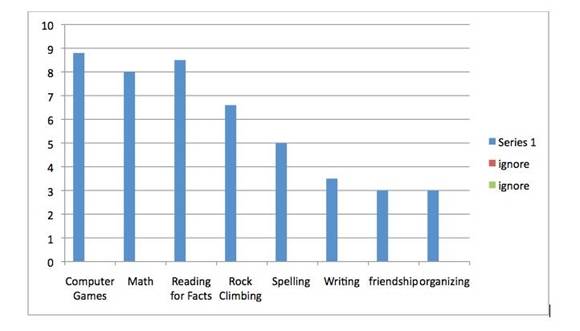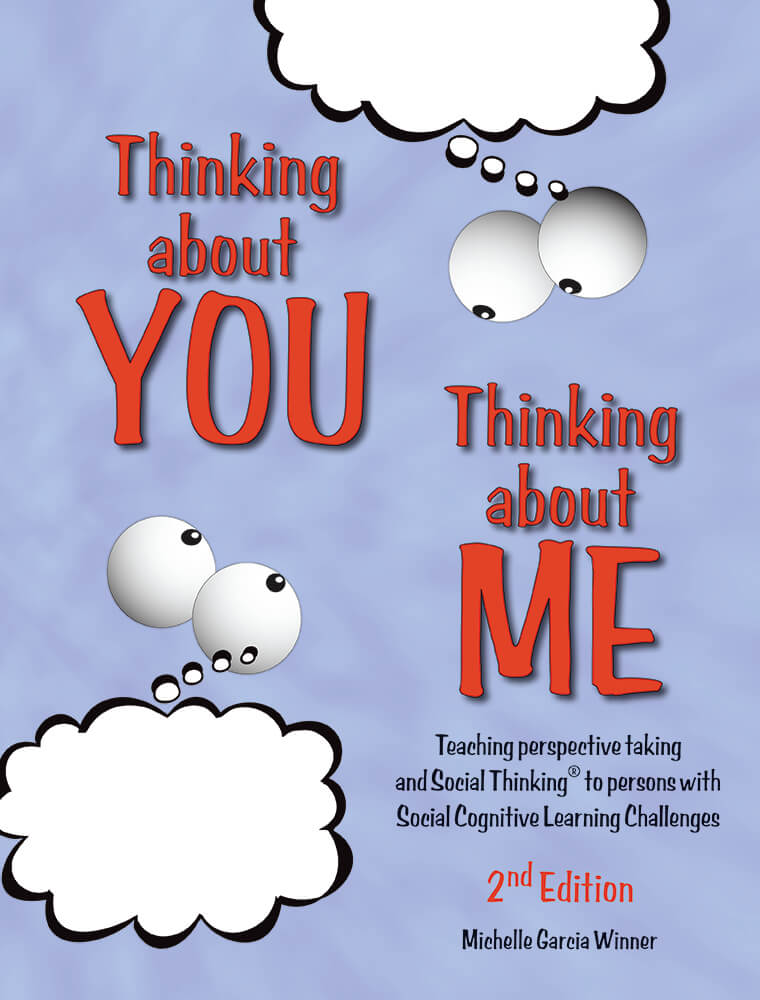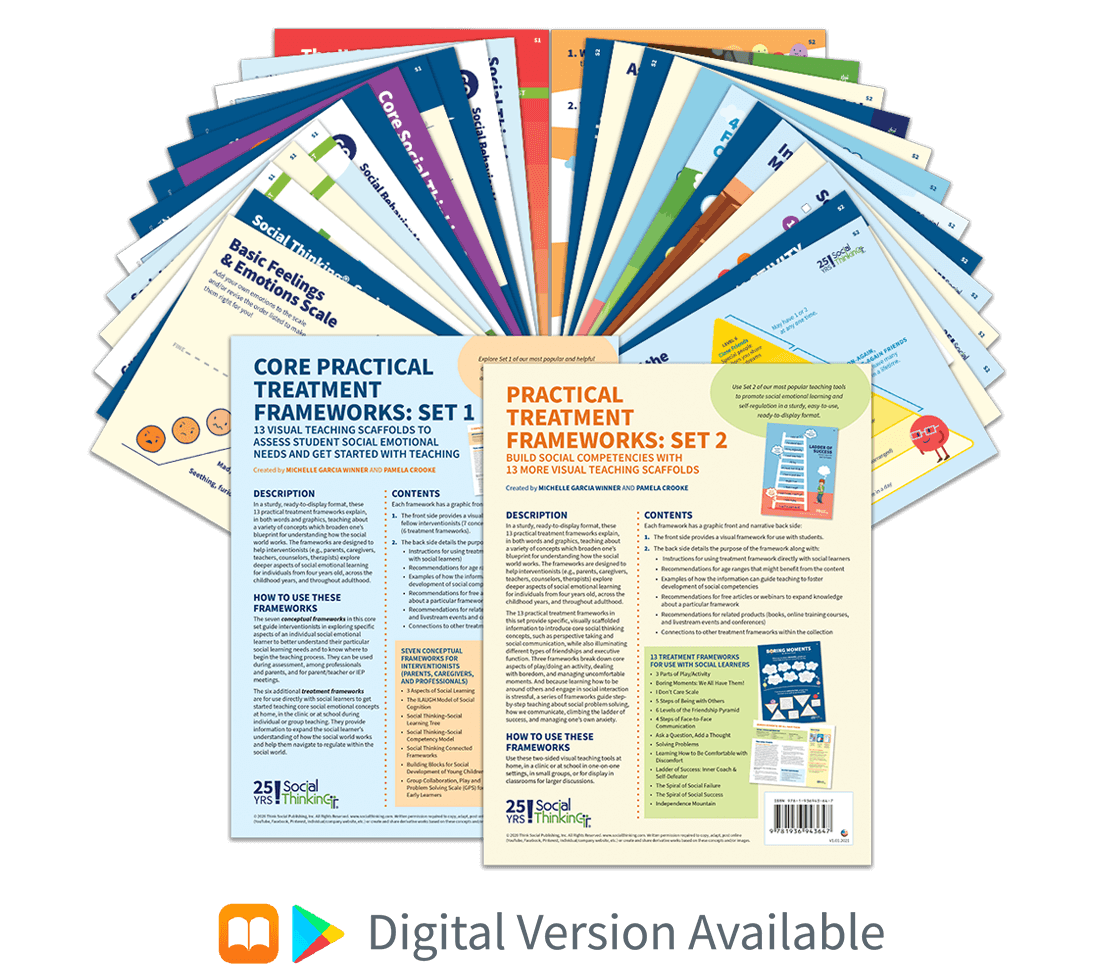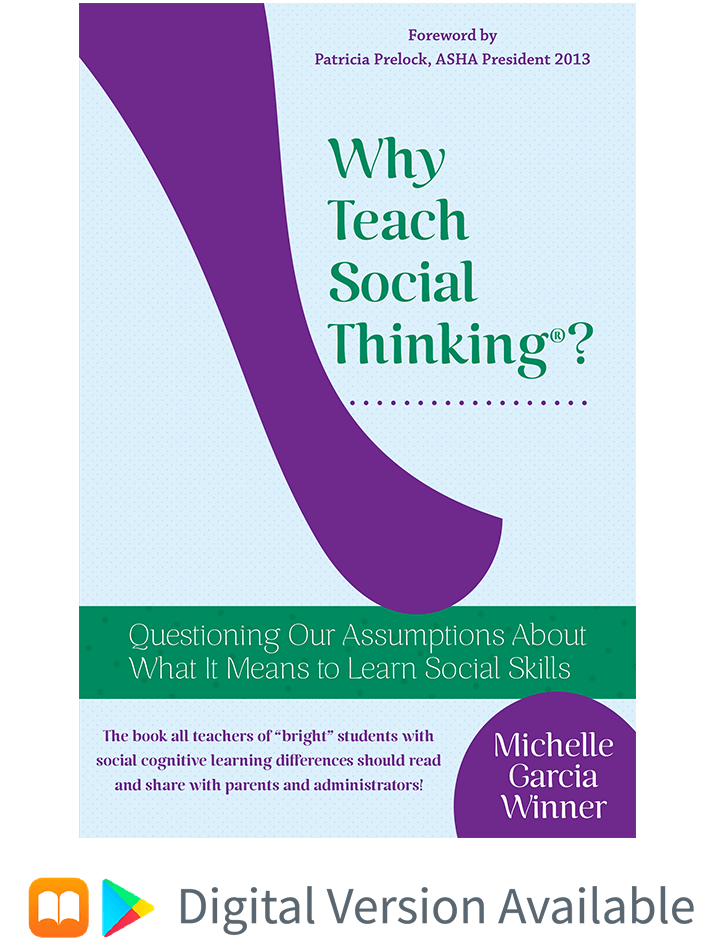Updated: July, 2021
© 2021 Think Social Publishing, Inc.
Over the years, I have been inspired by the writings of professionals who describe learning abilities, differences, and challenges within a framework of “multiple intelligences” (see Howard Gardner). Essentially this means that each of us has different types of intelligences and we each have our strengths, differences, and relative challenges with regard to our own brain’s design. This is the case for Neurotypicals and Neurodivergents.
Strengths and Struggles Lesson
I developed a lesson about teaching students and adults how to understand their social learning strengths, differences, and challenges in the context of their overall abilities and then how they can use their strengths to learn more strategies. I have done this lesson with students as young as eight years old and as old as they come.
The lesson is very simple. To save explaining it all with words, see the chart below.
Download the Learning Strengths and Struggles handout for students to create their own chart.
Here are some basic things I do as I develop this type of chart for an individual:
- Each chart is completely personalized for the person. It is not about recording test scores that purport to show competencies. The chart is about how the person perceives their own strengths, differences, and relative challenges. For this reason, you create the chart using areas that are individualized to the individual.
- To determine the ideas/areas to post on the chart, take time to talk to students and listen to what they enjoy doing and what they feel they do well.
- Always start by graphing out their strengths. Again, strengths are not about listing academic tasks exclusively. If someone says they are really good at playing a specific computer game or Legos®, then we make that a category and talk about what number to give it on the chart.
- It is also important to find some areas where students perceive they are just OK – their perceived abilities are neither good nor bad. They perceive themselves to be similar to the others in that area of functioning, or a “5” on the scale. With kids, you can use language such as:
- “First tell me what you think you are really good at compared to other kids you know.” After you have listed three to five areas on the chart then say, “Now tell me something you are just OK at doing compared to most other kids.”
- “Now tell me some things that your brain doesn't make easy for you - things you have noticed most other people can learn easier than you.”
- If they aren't used to thinking about how they function compared to others, I will shift gears to explore the idea that we all think about what others around us are saying and doing. At this point, I will ask them to tell me things like:
- Who talks a lot in your class?
- Who doesn't tend to do their homework?
- Who is really good in math?
- Who is super friendly?
- Who is mean?
By having this discussion, you help them notice that they are aware of others’ characteristics. This often helps them put their own abilities in perspective. - If they can’t answer the questions, I go back and suggest ideas similar to my earlier conversation. Ultimately, I am doing this to help them put their learning differences or challenges in context as compared to their learning strengths. Many individuals with social emotional learning differences struggle to talk about what they do well, as well as what is harder for them. Some ideas to consider include:
- How do you do with keeping track of your homework assignments and doing the homework?
- How do you do with writing paragraphs or reports (writing short responses on paper may have been a strength, while writing longer information is often a challenge)?
- How do you do making guesses about what you are reading?
- How do you do with playing in a group?
- How do you do with getting into a group?
- How do you do talking to other kids?
- Or I may just ask them about their "social skills”
- What to do if students rate a struggle as a perceived strength?
Often, and usually early in the session, I make a chart of my brain’s strengths, differences, and relative challenges. It can be helpful for them to see that I have both strengths and relative struggles in my own abilities.
If they say something like, “I’m really really great at math” but I know this is really more of a challenge for them, then I'll write the area they mentioned as a strength on the chart. I then pause to discuss it in relation to their other reported strengths. More often than not, they change the number (usually lower) to reflect the gradations of their strengths.
However, I have worked with those who are anxious or afraid to say they are anything but perfect across the categories. In those cases, I reassure them that everyone has strengths, differences, and relative challenges— - including me. On rare occasions, I have said, “Actually, this is an area that your brain makes a little harder for you. As you can see, you have lots of areas that are very strong, but this one is just a little tougher and that is why your mom brought you here today. Would you agree or disagree with that statement?”
- If you are familiar with the Social Thinking Methodology, you know that socially based learning differences and challenges (organizational skills, written expression, social relationships, reading comprehension, etc.) are all related to one another. Making this connection helps many individuals see they have lots of strengths but no one knows everything. This concept is also the focus of the article, "Social Thinking - Social Learning Tree"
- You will probably find that most clients or students are honest about themselves. It is often amazing how they are willing to talk about their learning strengths, differences, and challenges when it’s presented this way. When they have strengths in language and learning facts, we can then explain how these abilities will help them learn more information in the areas where learning is not as easy or natural to them.
- Once the chart is completed, talk about what it means to have a learning strength, learning difference, or learning challenge (or some individuals prefer to say “learning disability”). Remarkably, many students don’t understand what learning differences or learning disabilities are, so they react to their relative challenges with anger rather than understanding and eventual advocacy.
- You will also find that students/adults are much more willing to discuss their learning styles through the lens of strengths, differences, and challenges than through the lens of a label (Autism Spectrum, ADHD, etc.).
- Once you’ve reached this point, it’s time to talk about the individual’s own personal learning goals. Explain that learning is a lifetime journey for everyone and that they can and should have a say in what they want to get better at doing (e.g., making friends, getting a promotion, having conversations, turning in homework) compared to their other areas of strength. It is important that the individual student or client participates in their priorities. This is how we build motivation, tenacity, and follow-through.
Refer back to the chart over time and revisit their rankings to confirm they/you agree. Use the chart to think about future goals. It is also a helpful tool when explaining to parents/caregivers about their child’s learning abilities and goals.
Note: Using the language -based explanation of, “Your brain doesn't make this easy for you,” helps so many students and adults put their strengths, differences, and relative challenges in context. Make sure to point out times when their brain makes something easy for them to do as well as when it makes something harder to do.
The “art” of teaching is so critical in this lesson! Be very aware of the individual’s emotions and feedback while you go through this lesson. Spend significant time talking about what they are good and okay at doing rather than rush to address differences or challenges. Find and celebrate the talents and skills they have but also give them time and space to explore their own personal social goals and the competencies they hope to build to meet those goals.













